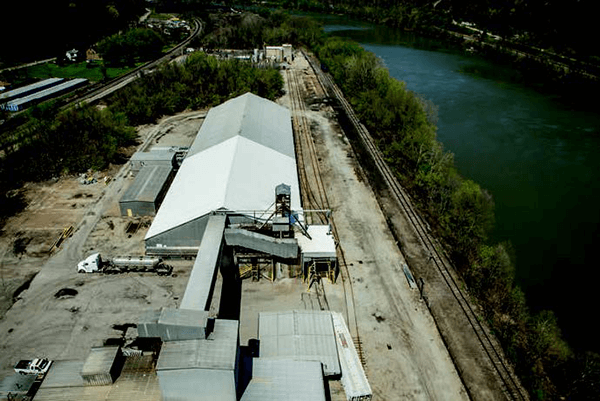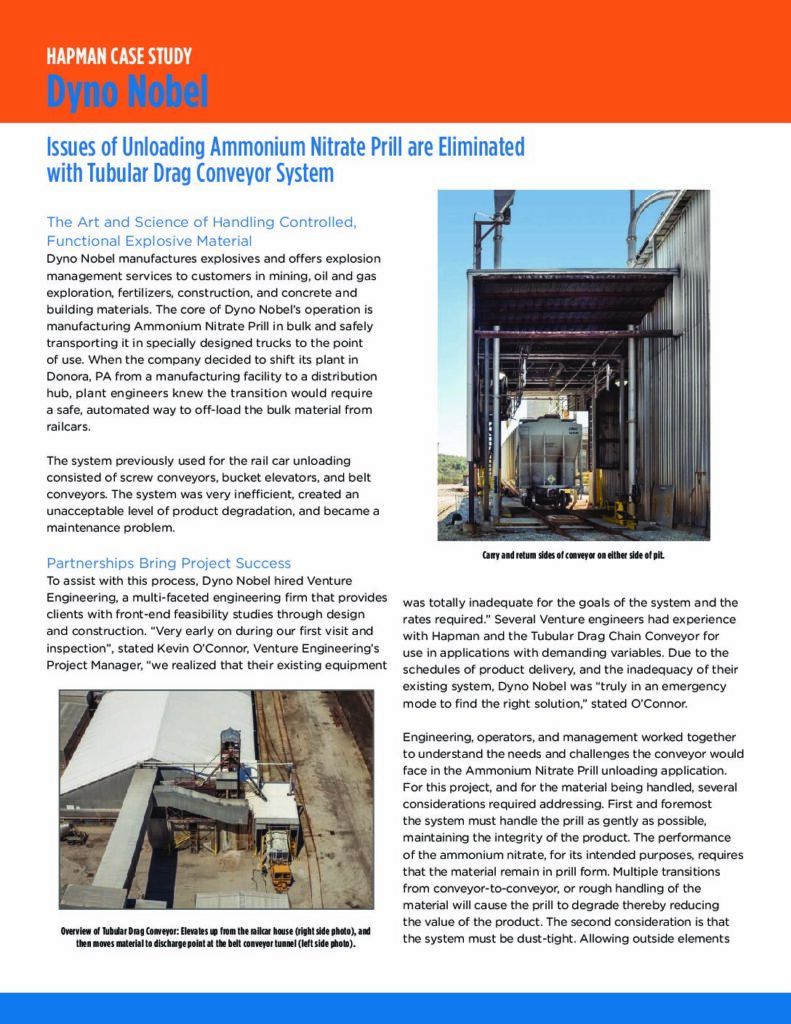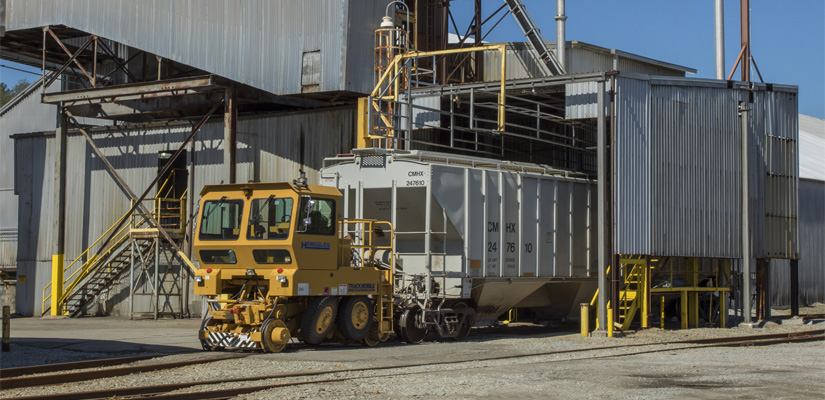
CHALLENGE
Help transition a facility from manufacturing plant to distribution hub. Design and build a safe, automated way to unload bulk material from railcars.
CUSTOMER
Dyno Nobel
INDUSTRY
Mining
The Art and Science of Handling Controlled, Functional Explosive Material
Dyno Nobel manufactures explosives and offers explosion management services to customers in mining, oil and gas exploration, fertilizers, construction, and concrete and building materials. The core of Dyno Nobel’s operation is manufacturing Ammonium Nitrate Prill in bulk and safely transporting it in specially designed trucks to the point of use. When the company decided to shift its plant in Donora, PA from a manufacturing facility to a distribution hub, plant engineers knew the transition would require a safe, automated way to off-load the bulk material from railcars.

Carry and return sides of conveyor on either side of pit.
Partnerships Bring Project Success
To assist with this process, Dyno Nobel hired Venture Engineering, a multi-faceted engineering firm that provides clients with front-end feasibility studies through design and construction. “Very early on during our first visit and inspection”, stated Kevin O’Connor, Venture Engineering’s Project Manager, “we realized that their existing equipment was totally inadequate for the goals of the system and the rates required.” Several Venture engineers had experience with Hapman and the Tubular Drag Chain Conveyor for use in applications with demanding variables. Due to the schedules of product delivery, and the inadequacy of their existing system, Dyno Nobel was “truly in an emergency mode to find the right solution,” stated O’Connor.
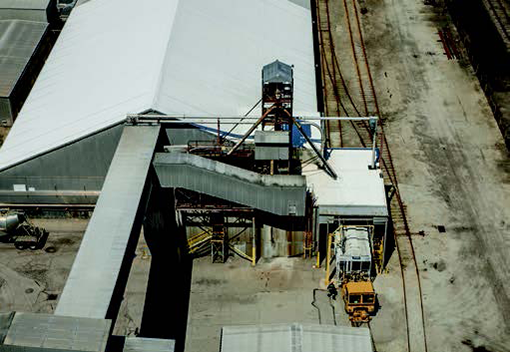
Overview of Tubular Drag Conveyor: Elevates up from the railcar house (right side photo), and then moves material to discharge point at the belt conveyor tunnel (left side pho to).
Hapman designed a stainless steel Tubular Drag Chain Conveyor in a gooseneck circuit. The conveyor housing is constructed of 8” diameter sch. 40 stainless steel piping. Inside the fully sealed housing, the chain consists of stainless steel sealed-pin design with a 6” pitch and U.H.M.W. polyethylene flights on 12” centers.
The stainless steel provides the necessary corrosion resistance and the heavy-duty chain selection allows the conveyor to easily start and stop under full load, a critically important feature when unloading rail or truck cars. The process of loading and unloading of bulk material poses variables that may not exist for an in-plant operating condition. To ensure the material was not exposed to the open air upon discharge from the railcar, the engineers at Hapman sourced an air-driven interface assembly. With the push of a button, operators activate the sleeve and easily attach it to the railcar discharge. The interface assembly provides a safe, sealed discharge for material to flow. From the railcar the material flows into an 18“-diameter rotary feeder, located in the underground pit below the tracks, which control feeds the ammonium nitrate into the Tubular Drag. The conveyor then elevates the material nearly 83’ and moves it horizontally another 54’. The material is discharged onto a belt conveyor for final distribution in the storage building.
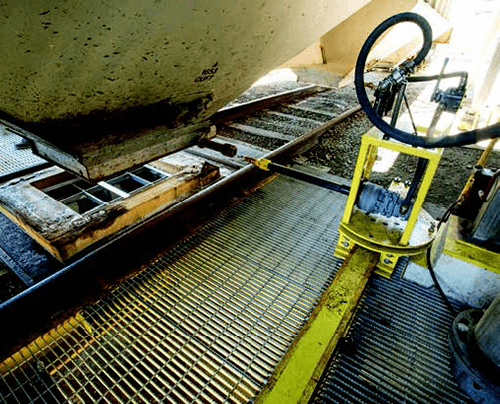
Railcar interface seals the discharge of the railcar.
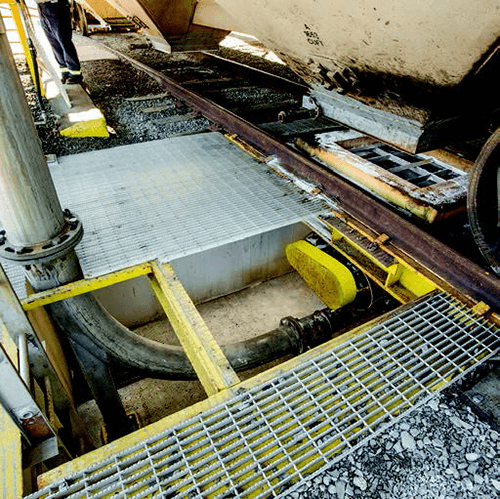
18” rotary feeder control feeds the prill into the Tubular Drag Conveyor.
Delivering Effective Bulk Material Railcar Off-Load
The railcar off-load system at Dyno Nobel is a success because each party involved in the engineering, design, implementation and start-up worked together to understand the challenges of the application. The engineers at Hapman took those challenges and applied more than 70 years of bulk material handling experience to design the most comprehensive, fully automated conveying system. The number of chain and flight options offered in the Hapman Tubular Drag Chain Conveyor allowed designers to select the chain that would be corrosion resistant and not permit material to get trapped in the knuckles of the chain. The conveying system provided the safe, gentle, trouble-free and effective bulk material off-load which Dyno Nobel was seeking.
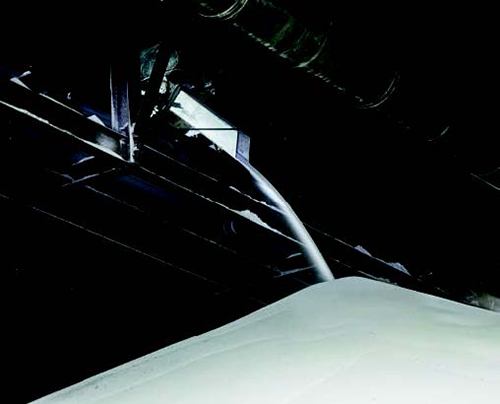
The prill is discharged into the storage facility.
